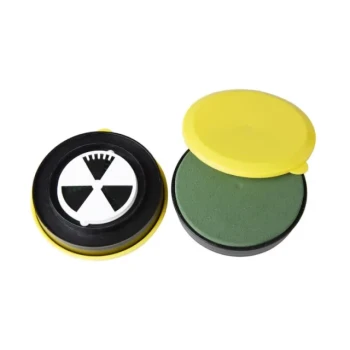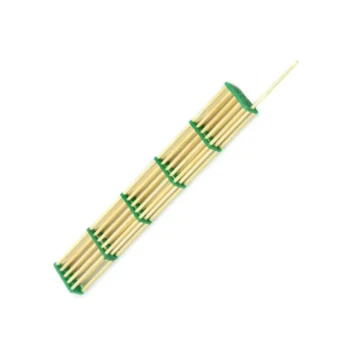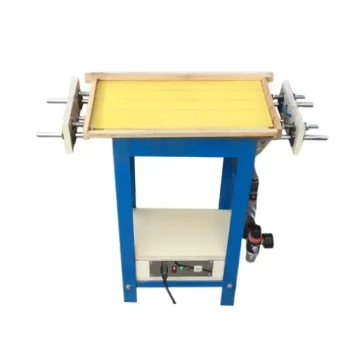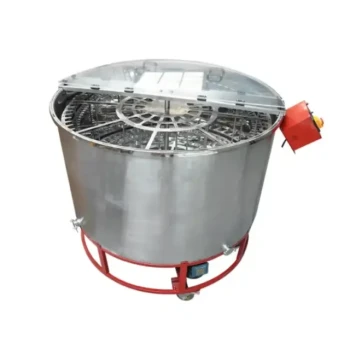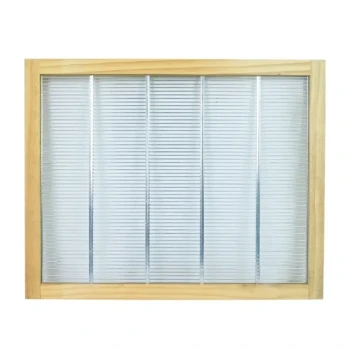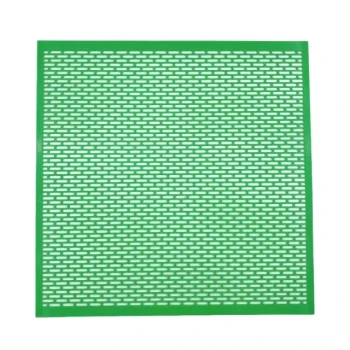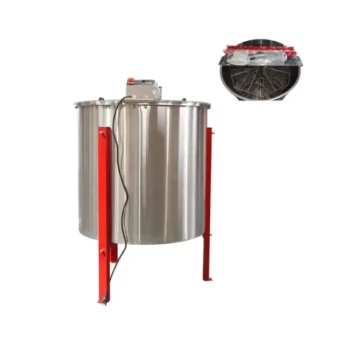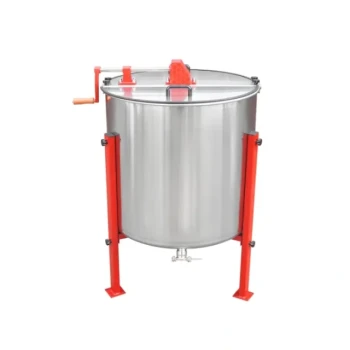The single best time to perform Oxalic Acid Vaporization (OAV) is during a naturally occurring broodless period in your hive. This most often occurs in late fall or early winter after the queen has stopped laying eggs for the season. This timing is critical because it ensures the vast majority of Varroa mites are exposed and vulnerable to the treatment.
The core principle to understand is that Oxalic Acid Vaporization is a "contact" treatment that only kills Varroa mites on adult bees (phoretic mites). It cannot penetrate the wax cappings of brood cells, making it ineffective against mites reproducing within the brood. Therefore, its success hinges entirely on treating when there is no brood to shield the mite population.

Why Timing is the Most Critical Factor
To use OAV effectively, you must understand how it interacts with the Varroa mite's life cycle. The treatment's primary limitation is also its greatest strength when timed correctly.
The Varroa Mite Life Cycle
Varroa mites exist in two distinct phases. They are either in a phoretic phase, riding on adult bees and feeding on their fat bodies, or a reproductive phase, sealed inside a brood cell with a developing bee pupa where they lay their eggs.
At any given time in a brood-heavy colony, up to 80% of the entire mite population can be hidden away in the reproductive phase, safe within the capped brood.
The Limitation of Oxalic Acid
Oxalic Acid Vaporization works by filling the hive with a fine crystal vapor that settles on the bees and internal surfaces. When mites come into contact with these crystals, it is lethal to them.
However, these crystals cannot penetrate the wax cappings of brood cells. Any mites reproducing inside are completely protected from the treatment and will emerge unharmed with the new bees.
The "Broodless" Window of Opportunity
This limitation dictates the strategy. By treating when the colony is broodless, nearly 100% of the mites are forced into the phoretic phase on adult bees.
With nowhere to hide, the entire mite population is exposed to the vaporized oxalic acid. This allows a single, well-timed treatment to achieve a very high efficacy rate, often killing over 95% of the mites in the hive.
Identifying Optimal Treatment Periods
Knowing you need a broodless period is the first step. The next is identifying when that occurs or how to create one.
The Late Fall/Early Winter Standard
For beekeepers in climates with cold winters, the ideal window is clear. After the first hard frosts, the queen naturally ceases egg-laying to conserve resources. This creates a natural broodless period that is perfect for a highly effective "knockdown" OAV treatment to prepare the colony for winter.
Ambient Temperature is Key
Treatment is most effective when bees are loosely clustered, not in a tight, defensive ball. The ideal outdoor temperature for vaporization is generally above 40°F (4.5°C) to ensure the vapor can circulate effectively throughout the hive.
Treating a Brood-Heavy Hive
Applying OAV to a hive with a significant amount of sealed brood is a low-efficacy procedure. You will only kill the fraction of mites that happen to be on adult bees at that moment.
The vast majority of the mite population will remain protected in the brood cells, ready to emerge and continue their destructive cycle. Repeated treatments are required in this scenario, which can increase stress on the bees.
Understanding the Trade-offs and Safety
While highly effective, OAV is a specific tool with important considerations.
Efficacy vs. Timing
The primary trade-off is its rigid timing requirement. Its high efficacy is entirely dependent on that broodless window. Other mite treatments may be more forgiving of timing but can leave residues in wax and honey or have a greater impact on the bees.
Personal Protective Equipment (PPE) is Non-Negotiable
Vaporized oxalic acid is a dangerous lung and eye irritant. It is a tool for the prepared beekeeper.
You must, at a minimum, wear a full-face respirator with acid gas cartridges, long sleeves, and acid-resistant gloves. Protecting your health is paramount.
Making the Right Treatment Decision
Your goal determines your strategy.
- If your primary focus is maximum mite reduction for winter survival: Wait for the natural broodless period in late fall or early winter and perform a single, decisive OAV treatment.
- If your primary focus is mid-season mite control: Recognize that OAV will only kill a fraction of the mites in a brood-heavy hive and is not a comprehensive solution on its own. It must be part of a broader Integrated Pest Management (IPM) strategy that includes regular mite monitoring.
Properly timed Oxalic Acid Vaporization is one of the most effective and cleanest tools for ensuring your colony's long-term health against the threat of Varroa mites.
Summary Table:
| Key Factor | Optimal Condition | Why It Matters |
|---|---|---|
| Brood Status | Broodless Period (Late Fall/Winter) | Exposes 95%+ of mites to treatment |
| Temperature | Above 40°F (4.5°C) | Ensures proper vapor circulation |
| Mite Phase | Phoretic Phase (on adult bees) | Treatment only affects exposed mites |
| Efficacy | Up to 95%+ mite reduction | Protects colony health for winter |
Ready to Protect Your Apiary with Professional-Grade Equipment?
At HONESTBEE, we supply commercial apiaries and beekeeping equipment distributors with wholesale-focused solutions for effective Varroa mite management. Our durable vaporizers and protective gear are designed for the demands of professional beekeeping.
Let us help you achieve higher mite knockdown rates and healthier overwintering colonies. Contact our wholesale experts today to discuss bulk pricing and equipment tailored for your operation.
Visual Guide

Related Products
- Oxalic Acid Vaporizer 12V for Bee Varroa Mite Treatment
- 12V Bee Mite Removal Evaporator Oxalic Acid Vaporizer for Bee Fumigation Treatment 180W Atomization
- Adjustable Formic and Acetic Acid Dispenser for Bee Mite Treatment
- Professional Bamboo Queen Isolation Cage
- Commercial 48-Frame Stainless Steel Honey Extractor
People Also Ask
- What is the most common method of applying oxalic acid for mite control? Dribble vs. Vaporization for Varroa
- How is the oxalic acid solution prepared for vaporization? No Solution Needed—Use Dry Crystals for Varroa Control
- What are the registered application methods for oxalic acid in beekeeping? Choose the Right Varroa Mite Treatment
- What safety precautions should be taken during Oxalic Acid Vaporization? Essential PPE & Procedures
- What is the role of oxalic acid in plants? A Key to Plant Defense and Internal Regulation


